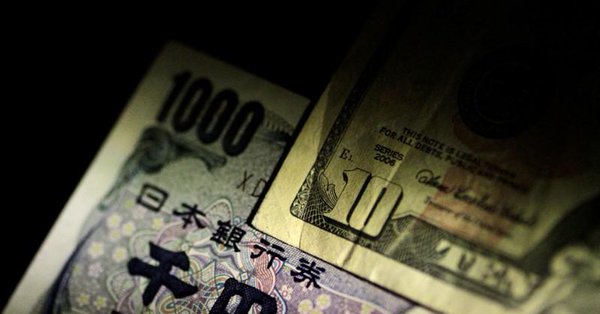Yen slides versus peers on Sino-US trade tensions, slowing global growth

The safe-haven yen fell versus its peers on Wednesday as concerns over slowing global growth and U.S.-Sino trade tensions dampened investors' appetite for riskier assets. The yen weakened by 0.3 percent versus the greenback to 109.73. Against the Aussie dollar, it fell by 0.5 percent. As expected, the Bank of Japan kept monetary policy unchanged and trimmed its inflation forecast, with a larger-than-expected drop in December export data earlier in the day underlining the need for continued support for the trade-reliant economy.
The Australian dollar gained 0.15 percent versus the greenback to $0.7133. Currency markets have been whipsawed over recent weeks as traders tried to come to terms with a range of issues from Brexit to slowing global growth and the outlook for major central banks. "Nervousness around global growth and trade tensions is certainly a factor driving the markets right now," said Michael McCarthy, chief markets strategist at CMC Markets. "Markets have also seen a spectacular run since late December..so the recent correction in equities can also be due to positioning."
On Monday, the International Monetary Fund (IMF) cut its 2019 and 2020 global growth forecasts, citing a bigger-than-expected slowdown in China and the eurozone, and said failure to resolve trade tensions could further destabilise a slowing global economy. Growth in China last year was the slowest since 1990 and is set to weaken further this year before stimulus measures start to kick in.
Investors are hoping for a breakthrough in U.S.-Sino trade talks, with the tariff dispute between the world's largest economies already rippling through financial markets and global demand. A report by the Financial Times that the United States had rejected China's offer for preparatory trade talks dampened risk sentiment overnight, though it was later denied by a White House adviser. The dollar index was marginally higher at 96.32. Traders in interest rate futures are wagering that the Federal Reserve will stand pat on rates in 2019 in the face of risks both at home and globally. The dollar rally last year was mainly driven by the Fed's four rate hikes, so traders expect a pause in the tightening cycle to cap the U.S. currency.
The euro was steady at $1.1367, while sterling edged up marginally to $1.2961, having gaining 0.5 percent in the previous session. Data on Tuesday showed that Britain's labour market remained robust despite an economic slowdown ahead of Brexit. Average weekly earnings, including bonuses, rose by 3.4 percent on the year, the biggest rise since mid-2008. Sterling is sitting close to its highs last seen in mid-November, a sign that traders expect Britain to avoid a chaotic exit from the European Union despite the looming March 29 Brexit date.
Since Prime Minister Theresa May’s divorce deal with the EU was rejected by lawmakers last week in the biggest defeat in modern British history, lawmakers have been trying to plot a course out of the crisis, yet no option has the majority support of parliament. "The market is now completely discounting the prospect of a hard Brexit, though the political risk still remains in play and volatility is sure to ratchet higher if no clear path is visible to the market," said Kathy Lien, managing director of currency strategy at BK Asset Management, The New Zealand dollar gained 0.25 percent in early Asian trade to $0.6766 after data showed that inflation edged higher in the fourth quarter and reducing the possibility of an interest rate cut.
(With inputs from agencies.)
- READ MORE ON:
- International Monetary Fund
- World economy
- Chief economist
- Theresa May
- Financial Times
- The White House
- White House
- White House Black Market
- Federal Reserve System
- Federal Reserve Act
- Federal Reserve Bank
- European Union
- European Commission
- Bank of Japan
- Michael McCarthy
- Kathy Lien
- CMC Markets
- Federal Reserve
- The New Zealand
- Vatsal Srivastava Editing










